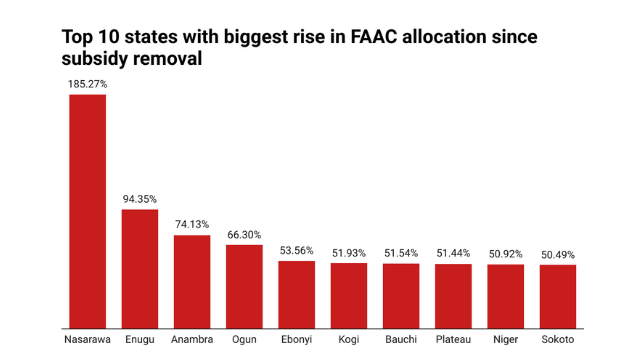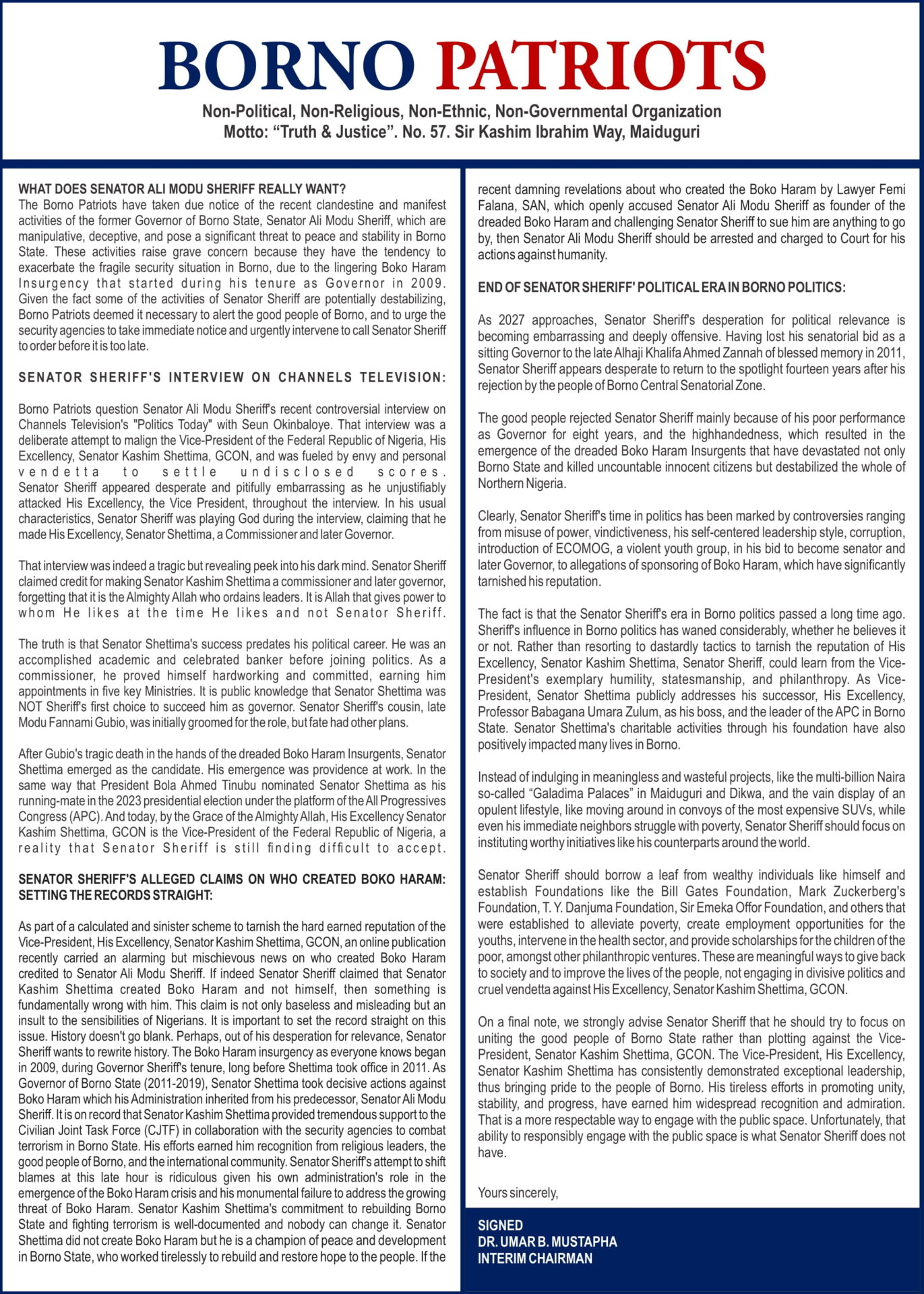NO fewer than 10 states across the federation received a boost of 50 per cent or more in their monthly allocation from statutory federal funds, findings have shown.
This was as 12 out of the 36 states received an increase of 40 per cent or more in their monthly allocation.
According to data sourced from monthly reports of the Federation Accounts Allocation Committee, as released by the National Bureau of Statistics, the total allocation to the 36 states also increased by 27 per cent to N4.5bn in 12 months from N3.58tn in the corresponding period.
For this report, our correspondent compared the amount of revenue shared by states between June 2022 and May 2023 and June 2023 to May 2024.
In the first five months of 2024, (January to May), the Federal Government, 36 states and 774 local governments shared N10.13tn as statutory allocation from the federation account.
Findings showed that states with over 50 per cent increase include Abia, Benue, Ekiti, Katsina, Kwara, Lagos, Ogun, Osun, Plateau and Taraba states.
Other states including Adamawa, Anambra, Borno, Cross Rivers, Ebonyi, Enugu, Kano, Kebbi, Nasarawa, Niger, Oyo, and Sokoto States got an increase of over 40 per cent.
The Federation Account Allocation Committee disburses allocations from the revenues generated into the Federations Accounts, which comprise multiple accounts specific to an or a sector/ business type.
The bulk of the revenue shared at FAAC meetings by the federal, state, and local governments are earnings from oil exports, taxes, and other statutory allocations.
Under the current revenue-sharing formula, the Federal Government gets 52.68 per cent of the revenue, states 26.72 per cent, and local governments 20.60 per cent.
The fund which is arguably the major source of revenue for most states is to ensure development at different levels of government and also to enable the states and LGs to meet their obligations.
A breakdown of the allocation showed that under Tinubu, the federal government received N4.75tn a surge of 28.3 per cent from the N3.7tn disbursed in one year under his predecessor.
The state government allocation under Tinubu’s first year rose by 53.8 per cent to N4.54tn compared to the N2.95tn disbursed in the preceding period under Buhari.
For the local governments, the revenue disbursed under Tinubu rose by 76 per cent or N1.38tn to N3.84tn from the N2.18tn shared under Buhari.
Further checks showed that Abia state got an increase of 50.5 per cent to N95.05bn under Tinubu from N63.15bn, Adamawa revenue recorded a 43.7 per cent surge to N91.89bn from N63.91bn it got under Buhari. Anambra’s revenue was a 42.13 per cent increase to N114.52bn from N80.57bn in the preceding year.
When compared with what was earned during the preceding period of former president Muhammadu Buhari’s administration, Benue state allocation was an increase of 53.46 per cent from N69.65bn it got under Buhari.
Further analysis showed that Rivers which is the second state with the most allocation under Tinubu got an increase of 8.86 per cent from N316.51bn which it got under Buhari.
Akwa-Ibom got a decline of 14.3 per cent from N343.48bn to N294.06bn while Bayelsa also got a decline of 0.22 per cent to N261.03bn from N261.6bn disbursed to the state during the Buhari administration.
The situation was different in Lagos State as FAAC allocation under Tinubu grew by 59.6 per cent to N253.92bn against N159.1bn which his predecessor allocated.
Similarly, allocation to Kano state rose by 45.16 per cent to N152.34bn from the N104.94bn released by FAAC.
Gombe recorded an increase of 38.75 per cent from N55.32bn to N76.75bn at the end of May 2024.
Other states got an increase of Borno (46.05 per cent), Cross Rivers(45.66 per cent), Ebonyi (40 per cent), Ekiti (55.8 per cent), Enugu (42.82 per cent), Katsina (50.57 per cent), Kebbi (45.54 per cent), Kwara (55.48 per cent), Nasarawa (43.94 per cent), Niger (43.14 per cent), Ogun (70.15 per cent), Osun (75.59 per cent), Oyo (41.71 per cent), Plateau (55.95 per cent), Sokoto (49.20 per cent), and Taraba state with a surge of 60.86 per cent.






